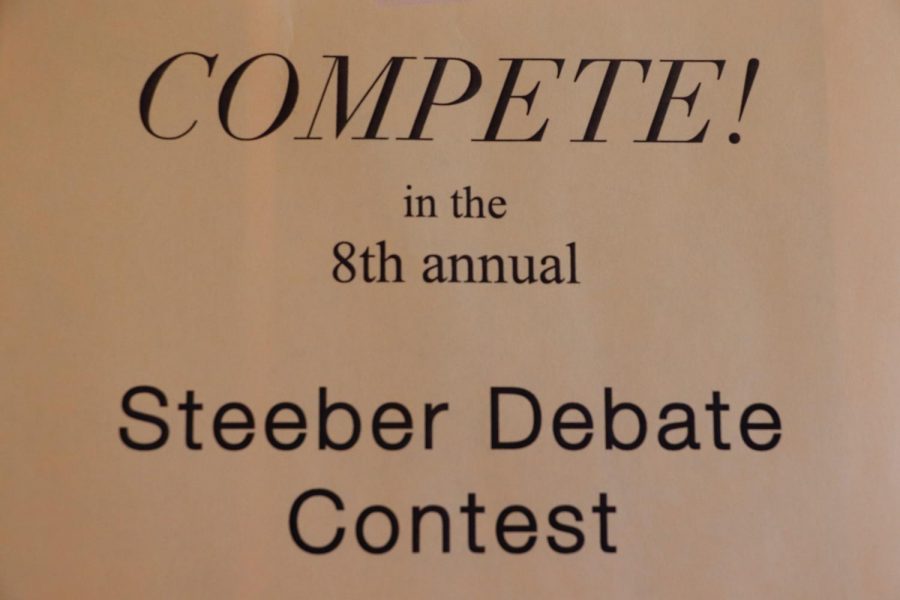Steeber Debate Contest: Finals Recap
October 9, 2017
The Steeber Debate Contest consistently showcases the best and brightest of US’s incoming freshmen and non-debaters, and this year was no exception. The focus of this eighth-annual contest was the role of Confederate war memorials in the twenty-first century, with debaters arguing whether to either keeping the monuments in a public place or move them somewhere less widely visible. Functioning just like a traditional debate tournament, the Steeber required each participant to write a case for each side, and a coin flip determined who would argue to remove the statues and who would argue to keep them. This year’s lineup contained almost entirely freshmen, and the finals featured two new faces to the Upper School: Rohan Krishnamurthi and Chris Moore.
After winning the coin toss, Rohan chose the pro side and presented four contentions on why the monuments to Confederate generals and soldiers ought to be removed. He first argued that Confederate monuments honor those who fought to continue slavery, and nearly all African Americans disapprove of the statues and see them as counterproductive to goals of racial integration. Moreover, these statues reflect poorly on the cities that house them, perpetuate white supremacist attitudes, and lead to hate crimes due to the controversy surrounding their prevalence. Rohan concluded his case by offering the alternative of moving the status to museums so that they can truly act as a relic of time’s past, not a symbol of modern sentiments.
Chris followed Rohan’s case with a three-contention defense of Confederate monuments in public places. He first argued that the statues are not racist by simply being there, for, at the time these Southern leaders were in power, slavery was perceived as being normal and accepted, and nearly every early president was a slave-owner. Instead of monuments to white supremacy, these statues primarily act as works of art and relics of the past, and removing these statues from public spaces is equivalent to erasing part of Southern history. Moreover, Chris pointed to several other overtly racist figures who we still honor in American culture; for instance, Andrew Jackson, the infamous Native American slaughterer and champion of the Trail of Tears is featured on the $20 bill. Chris concluded his case by reminding the judges that the U.S. Capitol complex was constructed using slave labor, and nobody would even suggest demolishing that monument to racism. Thus, the statues should stay.
The round eventually boiled down to a debate over the role of museums as public places as well as the current national perception of these statues. Rohan responded to Chris’s claim that the statues are works of art by suggesting that they therefore should be moved to museums to sit alongside other art, and Chris replied by claiming that museums are indeed public places, so moving statues to museums is no different than the status quo. Rohan responded to Chris’s contention on the proliferation of monuments to racists by stating that Andrew Jackson is in the process of being removed from the $20 bill due to his white supremacist actions, and the majority of Americans, especially African Americans, disapprove of the memorials; therefore, in a democratic society, they ought to be removed. Despite Chris’s convincing monologue in his Final Focus that remembering the darkest moments of history (such as slavery) brings us all together as Americans, Rohan won the final round on an 11 – 2 decision.
Both Chris and Rohan exhibited great talent in public speaking and potential for success in debate, and we look forward to seeing what these young debaters will accomplish in the future.

